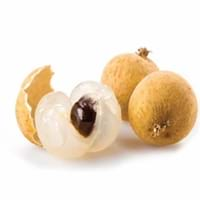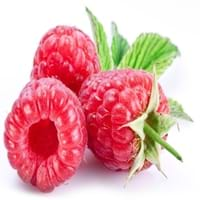Health Benefits
Anti depressant, Anti-inflammatory properties, Healthy mucus membrane, prevents oral cavity cancer, Prevents anemia, Prevents cases of morning sickness, Prevents lung cancer, Skin rejuvenation, Treatment of colonic diseases
Cancer prevention, Heart care, Prevents macular degeneration, Reduces blood circulation problems
General Benefits
Anti oxidant properties, Anti-inflammatory properties, Digestive aid, Gives you energy, Suppresses Arthritis
Anti-inflammatory properties, Controls blood sugar levels, Digestive aid, Eye care, Helps in weight loss
Skin Benefits
Reduces wrinkles, Skin rejuvenation
Anti-aging benefits, Brightens and lightens complexion
Hair Benefits
Not Available
Acts as moisturizer, Regulates hair growth, Shiny hair
Allergy Symptoms
Itching, Swelling of mouth, tongue or lips, Tingling sensation in mouth
Breathing difficulty, Eczema, Hives, Itching, Nasal congestion, Runny nose, Sneezing, Watery eyes, Wheezing
Side Effects
Mouth irritation, Weight gain
Allergic reaction
Best Time to Eat
As a snack in the late afternoon
Best if taken as a breakfast (or empty stomach), As a snack in the late afternoon, Don't eat after meal, Morning time (before lunch)
Vitamin B5 (Pantothenic Acid)
Vitamin C (Ascorbic Acid)
Vitamin E (Tocopherole)
Not Available
Vitamin K (Phyllochinone)
Not Available
Lutein+Zeaxanthin
Not Available
Calories in Fresh Fruit with Peel
Calories in Fresh Fruit without Peel
Not Available
Not Available
Calories in Frozen Form
Not Available
Calories in Dried Form
Not Available
Calories in Canned Form
Not Available
Calories in Jam
Not Available
Type
Tree fruit, Tropical
Berry
Season
Mid to late summer
Summer
Varieties
Chompoo Longan, Kohala Seedling, Haew, Edau and Biew Kiew
Amity, August Red, Boyne, Canby, Caroline, Comet, Dinkum, Dorman Red, Latham, Meeker, Black Hawk, Hayda, Lauren, Meeker and Latham
Seedless Variety
Not Available
No
Color
Rusty brown
Black, Purple, Red, Yellow
Inside Color
Yellowish brown
Pink
Origin
Mexico
Europe, North Asia
Soil Type
Well-drained
Sandy loam
Climatic Conditions
Sunny, Warm, Without frosts
Cold
Facts about
- Longan is also called as "Dragon's eye" in China as it gives an impression of an eyeball.
- Longan seeds can be used to absorb the venom after the snake bite and they also help to stop bleeding.
- There are more than 200 varieties of raspberries.
- In USA, 90% of the raspberries are grown in Washington, California and Oregon.
- They do not ripe after they are picked.
- A raspberry contain 100 to 120 seeds.
Top Producer
Thailand
Russia
Other Countries
Australia, Combodia, Taiwan, United States of America, Vietnam
Azerbaijan, Canada, Mexico, Poland, Serbia, Spain, Ukraine, United Kingdom, United States of America
Top Importer
China
United States of America
Top Exporter
Thailand
Poland
Botanical Name
Dimocarpus longan
Rubus Idaeus
Synonym
Dragon eye
Not Available
Subkingdom
Viridiplantae
Tracheobionta
Division
Tracheophyta
Magnoliophyta
Class
Magnoliopsida
Magnoliopsida
Family
Sapindaceae
Rosaceae
Species
D. longan
R. idaeus
Generic Group
Not Available
Rose
Difference Between Longan and Raspberry
We might think that Longan and Raspberry are similar with respect to nutritional value and health benefits. But the nutrient content of both fruits is different. Longan and Raspberry Facts such as their taste, shape, color, and size are also distinct. The difference between Longan and Raspberry is explained here.
The amount of calories in 100 gm of fresh Longan and Raspberry with peel is 83.00 kcal and 53.00 kcal and the amount of calories without peel is Not Available and Not Available respectively. Thus, Longan and Raspberry belong to Low Calorie Fruits and Low Calorie Fruits category.These fruits might or might not differ with respect to their scientific classification. The order of Longan and Raspberry is Sapindales and Rosales respectively. Longan belongs to Sapindaceae family and Raspberry belongs to Rosaceae family. Longan belongs to Dimocarpus genus of D. longan species and Raspberry belongs to Rubus genus of R. idaeus species. Beings plants, both fruits belong to Plantae Kingdom.









